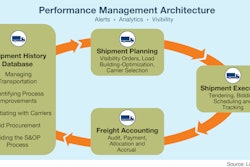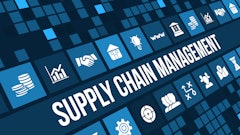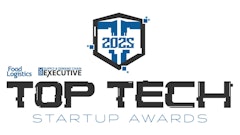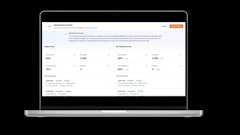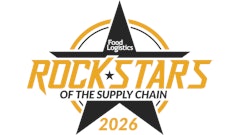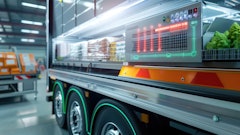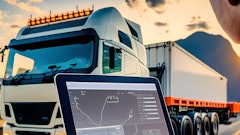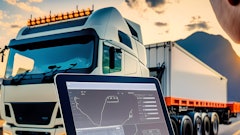
Deciding whether and when to replace a piece of supply chain software is a tricky balance. You can’t wait until your operations (or customers) are significantly affected by cumbersome processes or the lack of visibility, yet you know the inefficiencies of your current software are holding you back.
A transportation management system (TMS) is no different. Perhaps your current TMS enables some planning, optimization and routing tasks, but you know more modern TMS systems are delivering a whole lot more. Is your organization ready to make the change? There are several factors to think about when deciding whether to replace your TMS.
You may have ambitious plans to grow your business in the next several years, but what will that growth look like? How will you do it? If you are expanding into new markets, adding more customers or new partners, or if you simply want to make your customer service second-to-none, you will need a TMS that can support whatever path you take.
Log in to view the full article
Deciding whether and when to replace a piece of supply chain software is a tricky balance. You can’t wait until your operations (or customers) are significantly affected by cumbersome processes or the lack of visibility, yet you know the inefficiencies of your current software are holding you back.
A transportation management system (TMS) is no different. Perhaps your current TMS enables some planning, optimization and routing tasks, but you know more modern TMS systems are delivering a whole lot more. Is your organization ready to make the change? There are several factors to think about when deciding whether to replace your TMS.
1) The ‘How’ of Your Growth May Change
You may have ambitious plans to grow your business in the next several years, but what will that growth look like? How will you do it? If you are expanding into new markets, adding more customers or new partners, or if you simply want to make your customer service second-to-none, you will need a TMS that can support whatever path you take.
Most TMS systems on the market today were first designed 15 to 20 years ago, before the current complexities of the food and beverage industry could ever be imagined. When deciding whether to replace your TMS, compare it with the modern systems available now, such as those that enable self-configuration and flexibility to help you keep up with shifting demands. With the ability to self-configure, you can design your own portals, set up workflows, create custom screens and more.
There are many unknowns as your business grows, but process changes or workflow changes to your TMS shouldn’t take an act of Congress to implement. If self-configuration—and the control and freedom that come with it—can play a key role in supporting your growth, then it may be time to replace your TMS.
2) You’re in the Dark
In the food and beverage world, visibility is necessary start-to-finish: from order placement, allocation/manufacturing and warehousing through delivery and payment. However, getting true visibility into the logistics flow has traditionally been either very expensive or limited for a number of reasons, including:
- How do you translate the different data sources into a common language?
- How do you do that efficiently and in a timely way?
- How do you turn that intelligence into action?
Modern, configurable TMS systems can now optimize transportation execution with visibility-driven workflows; the system can read and translate vastly different data types and put them into the same format from which you can take action.
Through continuous visibility optimization, a TMS can give you operational data for better visibility, help you automate exceptions and respond faster to disruptions, drive carrier management and know what’s happening across all modes. Continuous visibility optimization is live and being used in the market, transforming the way data is gathered and translated. If you feel like you’re in the dark when it comes to visibility, it may be time to replace your TMS with one that has superior integration and intelligence for extended visibility transportation execution.
3) Integrations Are Painful
A TMS is only as powerful as its connections. If yours are weak, that’s a clear sign that it’s time to replace your TMS. Or, if you have to buy separate modules or use third-party tools and monitoring services, you’re paying a lot of extra costs that could be eliminated with a new system.
Everyone loses money (except the vendor) if it takes months to integrate your partners and customers. By making the move to one TMS vendor with one platform, you get faster integrations and simpler set-ups that can improve your reputation and bottom line. In the end, you have the freedom to integrate carriers and customers on your own schedule rather than waiting for the vendor’s timing, and you can rely on the same framework that drastically reduces costs by eliminating the need for separate modules.
4) When Conditions Change, You Struggle
When conditions or order requirements change, how quickly can you move to Plan B? If your optimization and route planning aren’t powerful enough to recalculate the best routes and options in real time—and can’t give you visibility into your best alternatives—it may be time to replace your TMS.
Planning and optimization capabilities in modern TMS systems take into account all real-world constraints to give you the best options for delivering an order and building loads you can actually execute. As conditions inevitably change, the TMS continuously shows you the effects of those changes on the routes and whether there are new routing options to consider.
For example, in pool distribution, a newer TMS will allow several possible pool points in every area and have the algorithm select which one(s) is appropriate for a load based on the mix of freight. Depending on the route, a smaller shipment in route is often cheaper to ship as a stop-in-transit, while a larger shipment out of route is usually cheaper to deliver outside the pool point. When pool distribution is done right, it can save your organization significant costs.
Relatedly, continuous pool optimization is a recent TMS feature that can be a game-changer for organizations in the food and beverage space. It gives you the ability to plan shipments into a predetermined consolidating point or dynamically determine the optimal consolidation facility. It maximizes achievable freight savings, while adhering to pickup and delivery constraints, and improves customer service.
If you have a TMS with simplified route planning, it’s not doing your organization any favors, and it’s stifling creativity when it comes to routing. Static decision-making is not cost efficient. Innovations like continuous pool optimization are the latest features that open up the routing process to more creativity and flexibility.
5) Added Influences
You may also consider ease of implementation, usability and customer support when deciding whether to replace a TMS.
To get a good sense of this, ask potential vendors about their average implementation times and check references to uncover the process and speed of an implementation. A stellar TMS that takes a year to implement quickly loses you ground, while one that can be implemented in a few months or weeks can make for a smoother transition and faster ROI. To ensure the longevity of your investment, look for a TMS designed with the logistics planner in mind. If your current TMS requires coding and an engineering degree to make changes, it may be time for a switch.
And finally, if you feel like you’re spending as much time on the phone with vendor support as you are operating your TMS, or if you have to pay the vendor each time you want to make a workflow alteration, you may need to make a change. A self-configurable TMS will have a lower total cost of ownership because it frees you from costly support contracts and allows you to do many of the changes yourself.
Understanding how your organization’s growth, visibility, costs and flexibility are impacted by your current system will help you determine how far you’re behind—and how far ahead you can get with a new TMS.






